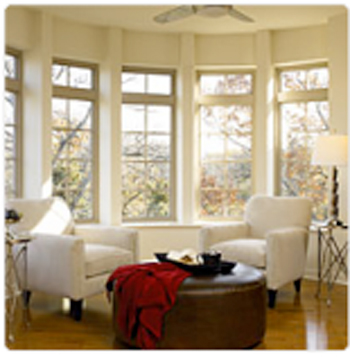Understanding Light
There is an art and science to using natural light in your home. It can illuminate your interior spaces, provide solar gain to reduce heating bills and control solar gain to reduce cooling bills. Obviously, your windows play a big role. It would require a long chapter in a home design book to consider all the ramifications of window light and how to most effectively use it. Here, we’ll just provide some tips to get you thinking.

Why Use Window Light?
There are many valid reasons to bring more natural light into your home—both from a medical standpoint and in terms of general quality of life.
According to many health professionals, natural light has the following benefits:
- Helps combat seasonal affective disorder (the winter blues).
- Makes us feel more connected to the outdoors and natural world.
- Supports natural biological rhythms.
Natural light also can improve your quality of life by:
- Bringing out the natural color of furnishings and objects (artificial lights often affect colors in unexpected ways).
- Decreasing heating and cooling consumption when used and controlled properly.
- Making homes feel more open and spacious.
New Home Considerations
If you’re building a new home, you’ll want to work with your builder on the orientation of your home on its site. You should talk to them about the strategic placing and use of various kinds of windows to capture the light and energy savings you want. Consider, for instance:
- If you’re looking for maximum solar gain to reduce heating requirements, you’ll want to have an expansive southern exposure with lots of windows. (Depending on your climate zone, heat from sun entering south-facing windows and glass doors can provide from 20% to 80% of the heat required to keep a home warm in the winter.) To reduce the amount of solar gain in the summer when you don’t want it, consider using overhangs to provide shade.
- If you’re in a hot climate and looking for ways to reduce cooling requirements, you’ll want to maximize the amount of windows you place on the north side of the house, allowing in natural light without the direct rays of the sun. Windows on the east side may bring in unwanted morning heat. Windows on the west side may bring in unwanted afternoon heat. And windows on the south side will bring in unwanted heat all day. Overhangs and extra high efficiency forms of Low-E insulated glass reject more of the sun’s heat and fabric-fading rays while letting you enjoy window light.
- If you’re a morning person and like to get up with the light, you’ll want a bedroom in the southeast corner of a home.
- If you’re a night owl, avoid eastern sunrise. By choosing a west-facing bedroom, the rising sun won’t wake you up in the morning.
- If you’re considering skylights, a smaller skylight with a deep splayed lightwell can provide a great deal of light with fewer thermal disadvantages than a bigger skylight with a lightwell that has straight sides.
- If you’re looking for the most effective ventilation, balance window light and cooling by placing windows on at least two sides of each room.
Replacement Window Considerations
If you’re replacing windows, you can make the best of your home’s existing site and orientation on a window by window basis so as to control solar gain and take advantage of more natural light. Work with your window dealer and contractor to ensure you take maximum advantage of today’s insulating glass and other window features.
- If you’re looking to control solar gain to reduce cooling costs, you’ll want to use extra high-efficiency forms of Low-E insulated glass to reject more of the sun’s heat and damaging rays while letting you enjoy window light.
- If you’re looking for window light and ventilation, consider options that let in lots of air and light such as casement and awning windows and French and sliding patio doors. Also, ventilating skylights can provide a great way to let in more light while, at the same time, giving a place for rising warm air to leave the house.
- If you’re looking to cut heating costs, be sure to replace your windows with quality, energy–efficient windows. Windows on the north, east and west walls can all be great for balancing interior light with natural light, but in cold climates can be energy drains. Replacing these windows with energy–efficient options can help improve your heating bills.